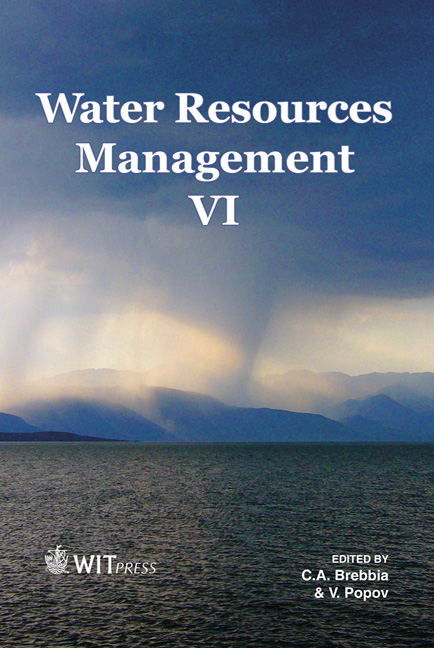Groundwater Quality And Its Variation Along Irrigation Canals In Pakistan
Price
Free (open access)
Transaction
Volume
145
Pages
11
Page Range
371 - 381
Published
2011
Size
513 kb
Paper DOI
10.2495/WRM110321
Copyright
WIT Press
Author(s)
M. Latif
Abstract
The Indus Basin of Pakistan is thickly populated and supports a rapidly growing population of 170 million. More than 90 percent of food production in the country is contributed by the irrigated agriculture which is presently facing many challenges and hardships such as salinity, extreme scarcity of canal water, groundwater mining and degradation of its quality. Water and soil samples were collected in a canal command area to assess and analyze the quality of pumped groundwater and soil salinity respectively. Data of crop yield and income of the farmers was also collected. The results show that electrical conductivity (EC) of groundwater increases from upper to lower reaches along all the irrigation channels i.e. the main, secondary and tertiary canals. The groundwater was found suitable only in about one-half of the command area. In rest of the area groundwater is either marginally fit for irrigation or it is hazardous (unfit). Similarly the soil salinity also increased from upper to lower reaches along the irrigation canals. The soil salinity almost follows the pattern of groundwater salinity. The crop yield and net income of the water users decreased along all the irrigation channels (i.e. the main, secondary and tertiary canals) but decrease in net income was much more than decrease in crop yield. Due to less canal water supply along the lower reaches of the irrigation channels, the downstream water users pump more groundwater to meet their irrigation needs. The deteriorating groundwater quality along the lower reaches of the irrigation channels further adds misery to the downstream farmers by degrading productivity of their lands caused by excessive use of saline groundwater. Location of the water users along the canal irrigation system had significant impact on their crop yield as well as income and these parameters decreased from head of the irrigation channels towards their lower reaches. For example, the net income of the tail-end farmers
Keywords
irrigation water, soil salinity, cost of irrigation, income, productivity, groundwater policy and options





